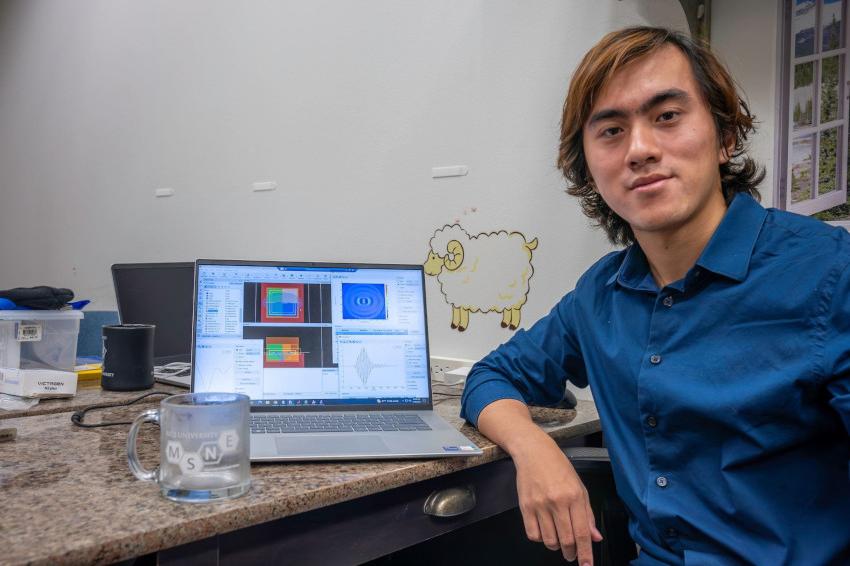Terahertz technology for quantum sensing
04.08.2023 - New approach using strontium titanate phonon-polariton devices in the frequency range of 7 to 13 terahertz.
Rice University researchers have a plan for leveraging terahertz radiation for quantum materials and nonlinear molecular spectroscopy. The research was performed in the Emerging Quantum and Ultrafast Materials Laboratory of Hanyu Zhu. “Optical technologies in the frequency region of the new terahertz gap – it is far less accessible than the rest of the 0.3-30 terahertz gap – could be very useful for studying and developing quantum materials for quantum electronics closer to room temperature, as well as sensing functional groups in biomolecules for medical diagnosis,” Zhu said.
The challenge faced by researchers has been identifying proper materials to carry and process light in the terahertz gap. Such light strongly interacts with the atomic structures of most materials and is quickly absorbed by them. Zhu’s group has turned the strong interaction to its advantage with strontium titanate, an oxide of strontium and titanium. “Its atoms couple with terahertz light so strongly that they form phonon-polaritons, which are confined to the surface of the material and are not lost inside of it,” Xu said.
Unlike other materials that support phonon-polaritons in higher frequencies and usually in a narrow range, strontium titanate works for the entire 5 to 15 terahertz gap because of the quantum paraelectricity. Its atoms exhibit large quantum fluctuations and vibrate randomly, thus capturing light effectively without being self-trapped by the captured light, even near zero degrees Kelvin. “We proved the concept of strontium titanate phonon-polariton devices in the frequency range of 7 to 13 terahertz by designing and fabricating ultrafast field concentrators,” Xu said. “The devices squeeze the light pulse into a volume smaller than the wavelength of light and maintain the short duration. Thus, we achieve a strong transient electric field of nearly a gigavolt per meter.”
The electric field is so strong that it can be used to change the materials’ structure to create new electronic properties, or to create a new nonlinear optical response from trace amounts of specific molecules which can be detected by a common optical microscope. Zhu said the design and fabrication methodology developed by his group are applicable to many commercially available materials and could enable photonic devices in the 3 to 19 terahertz range. (Source: Rice U.)
Link: Dept. of Materials Science and NanoEngineering, Rice University, Houston, USA







